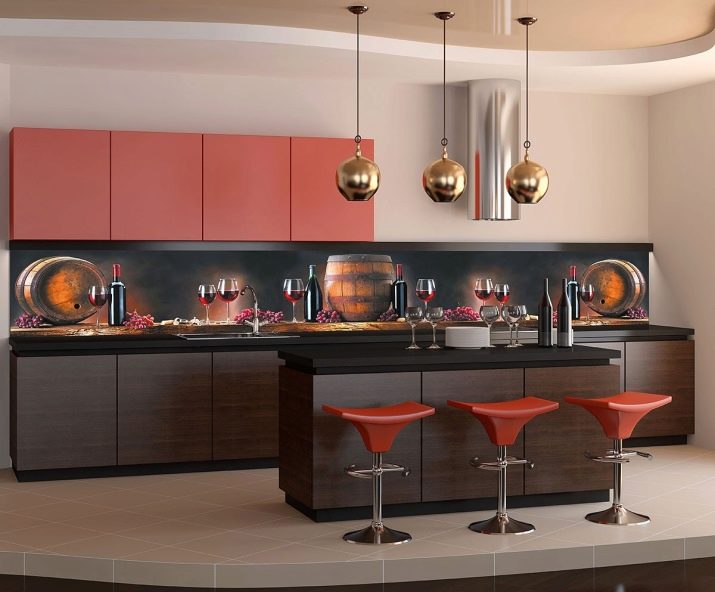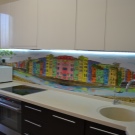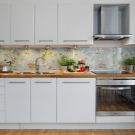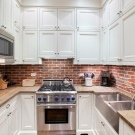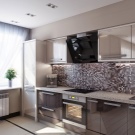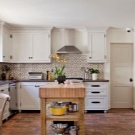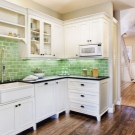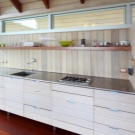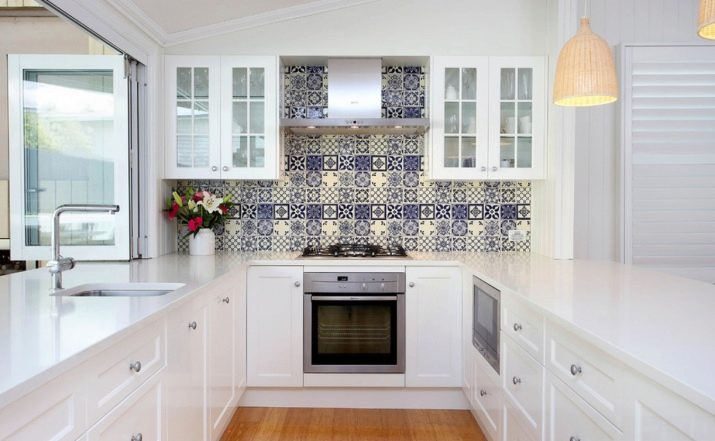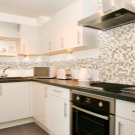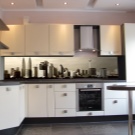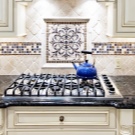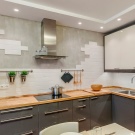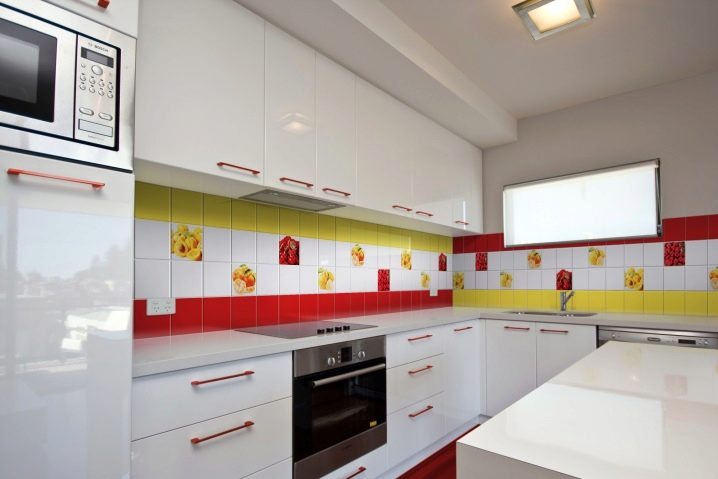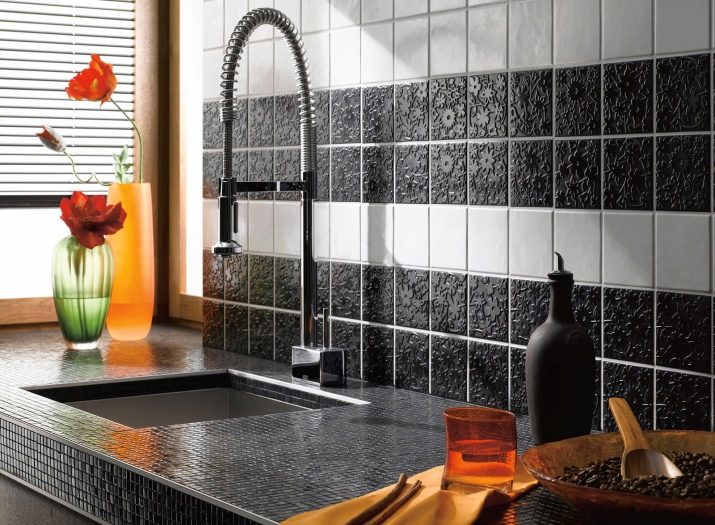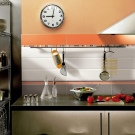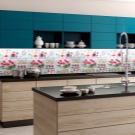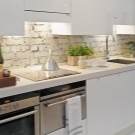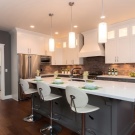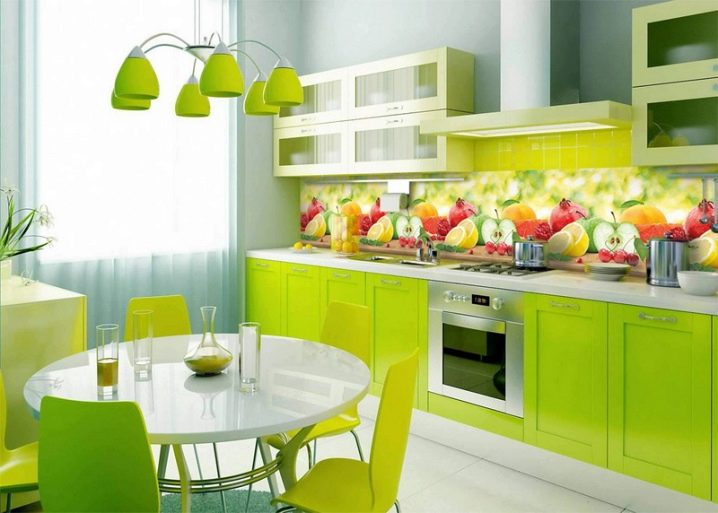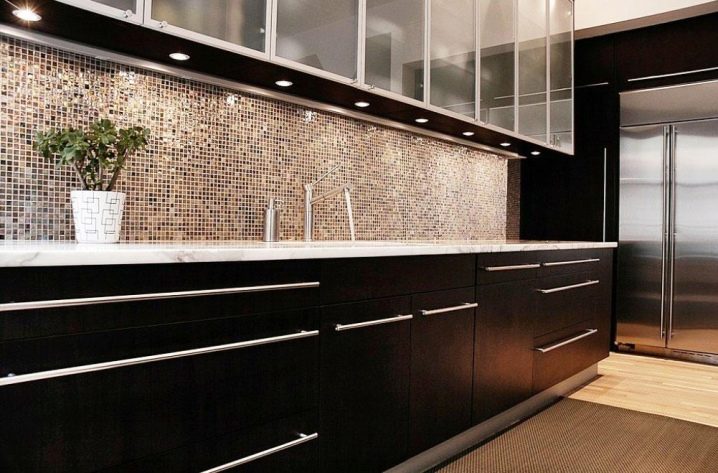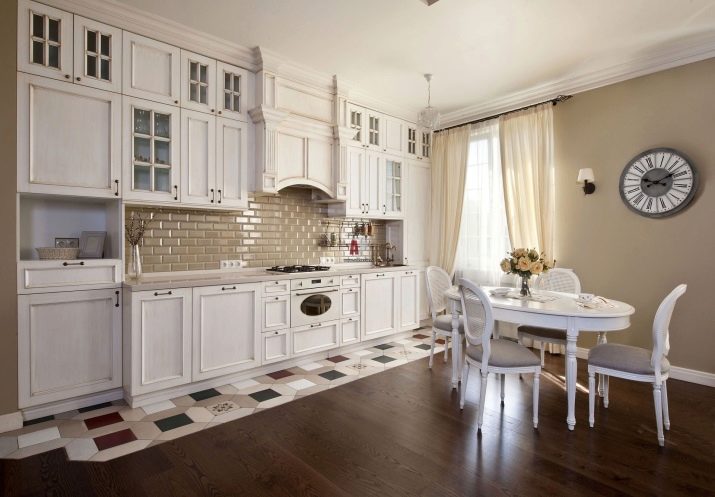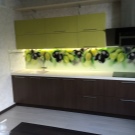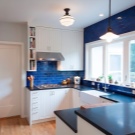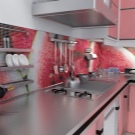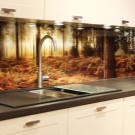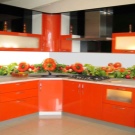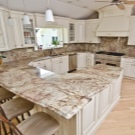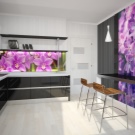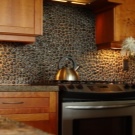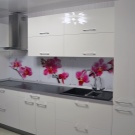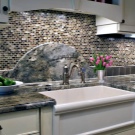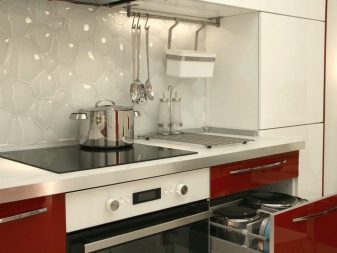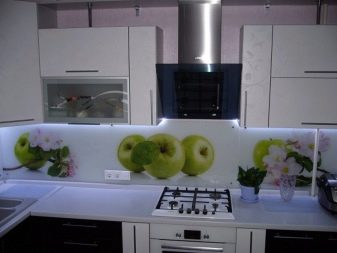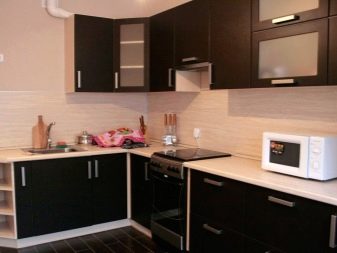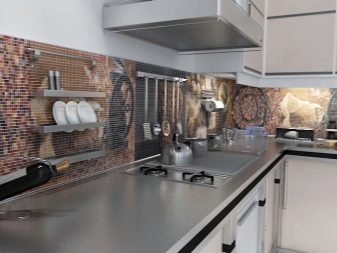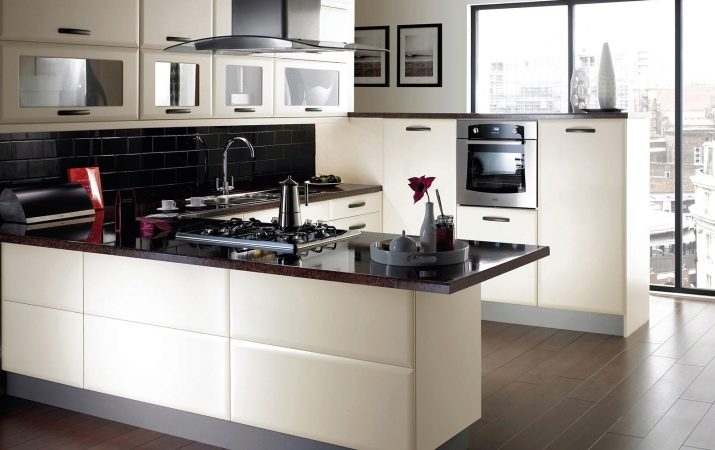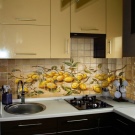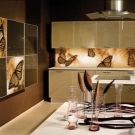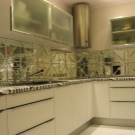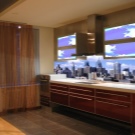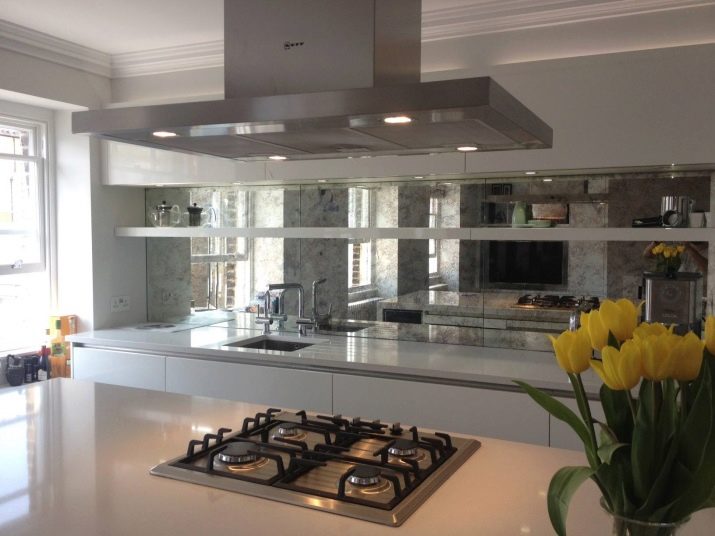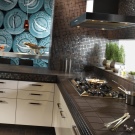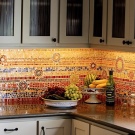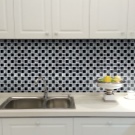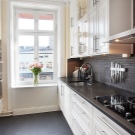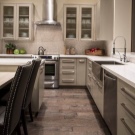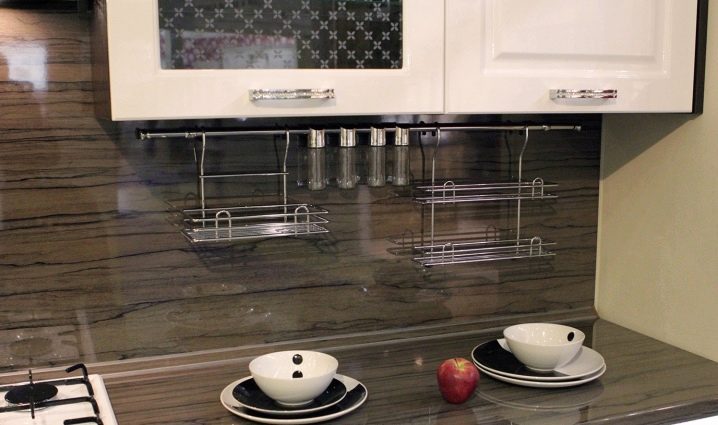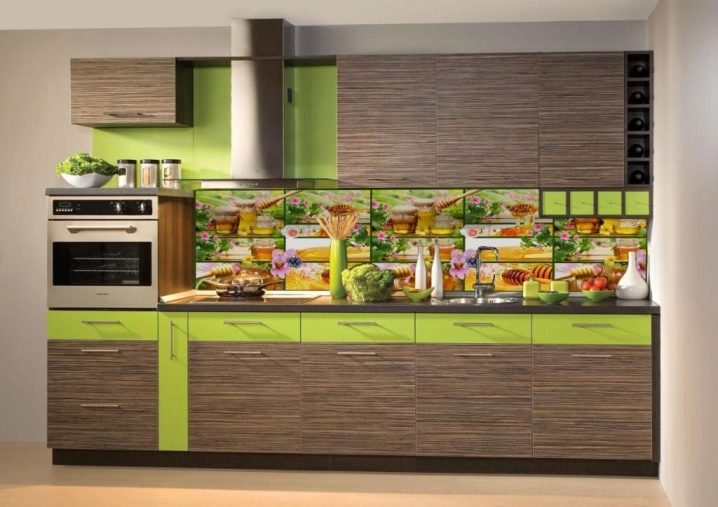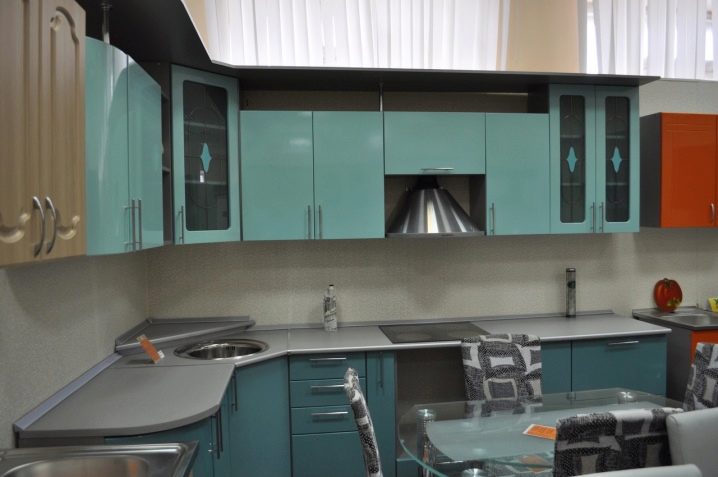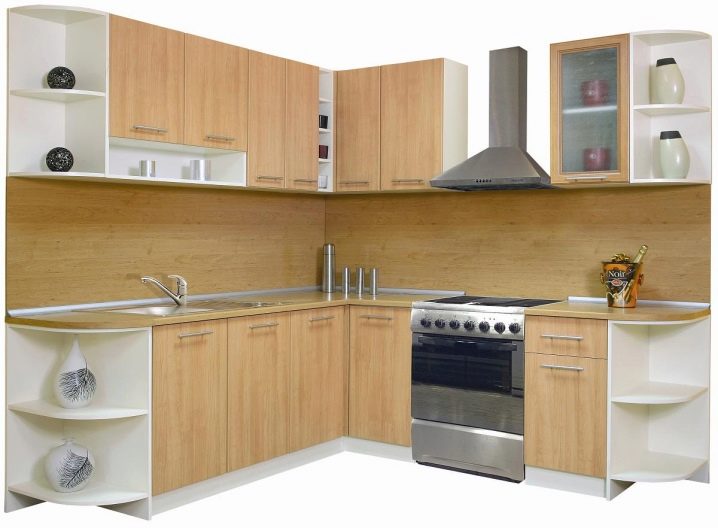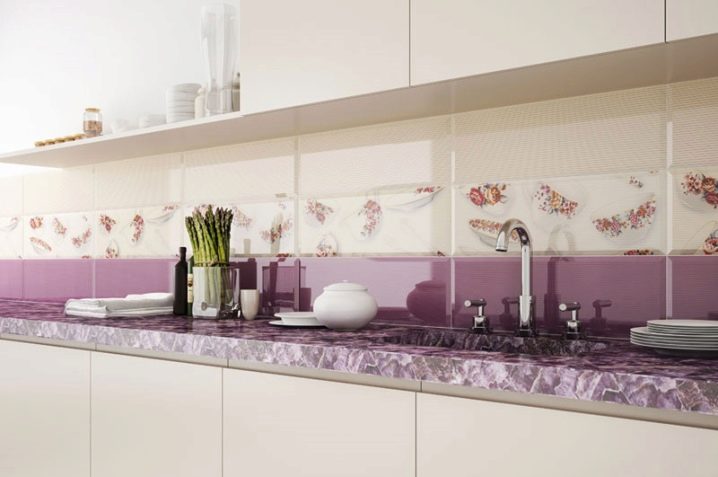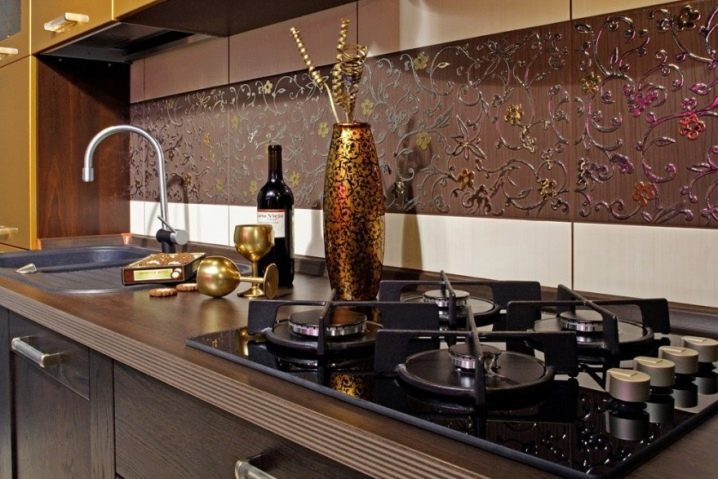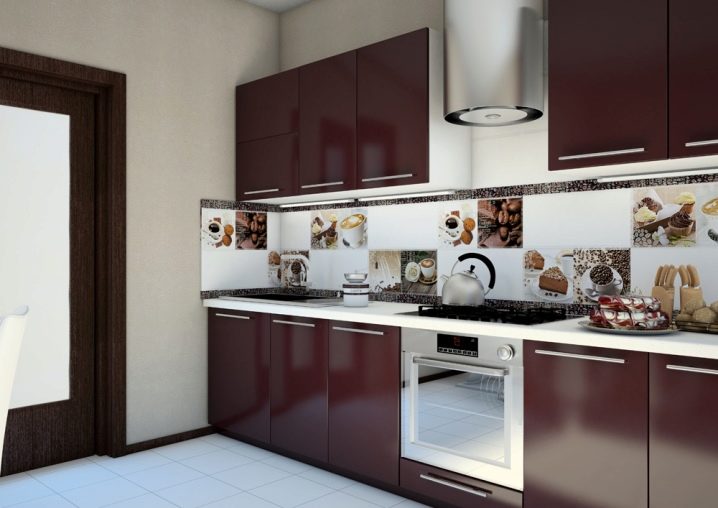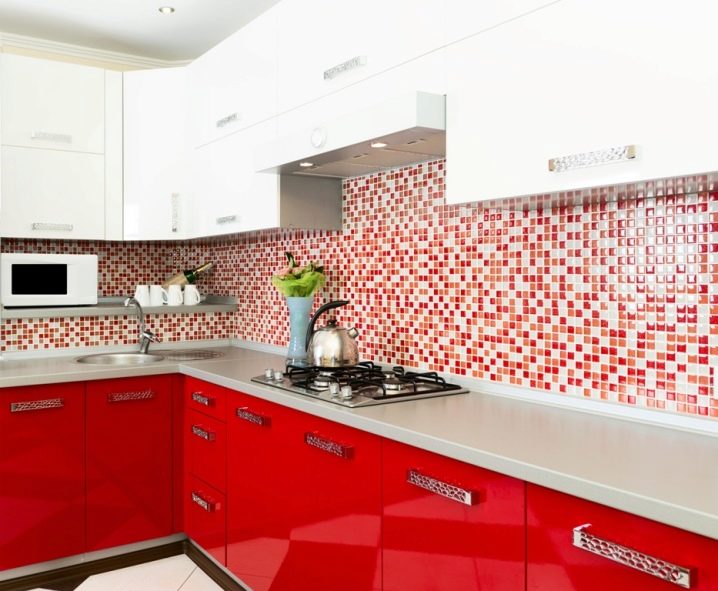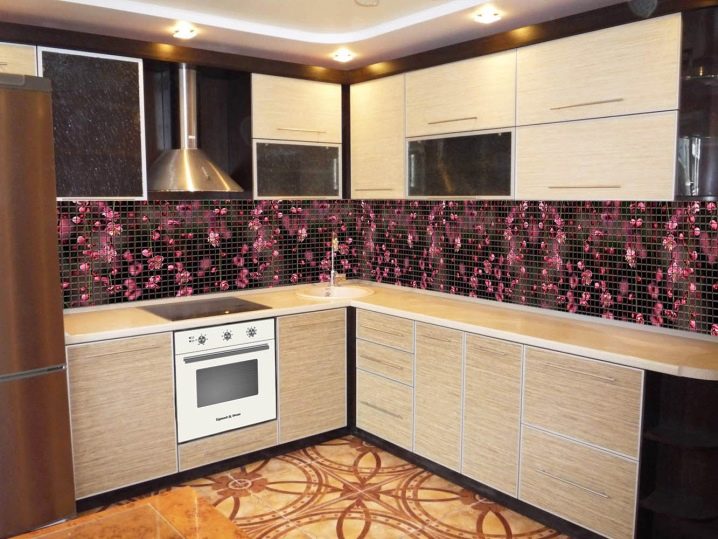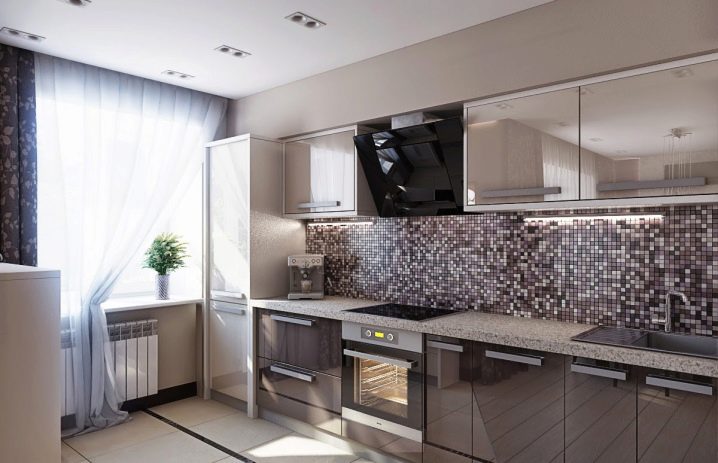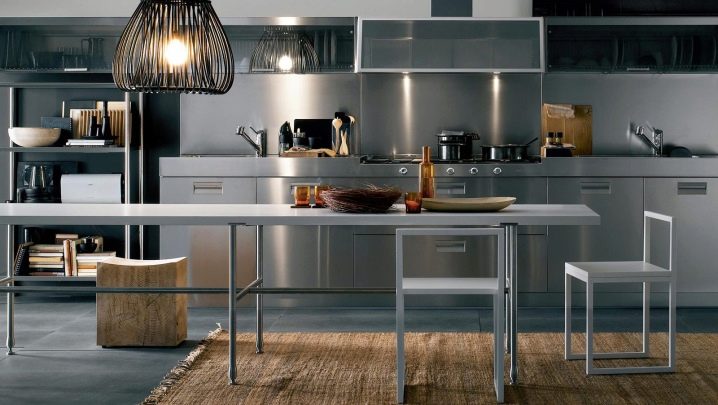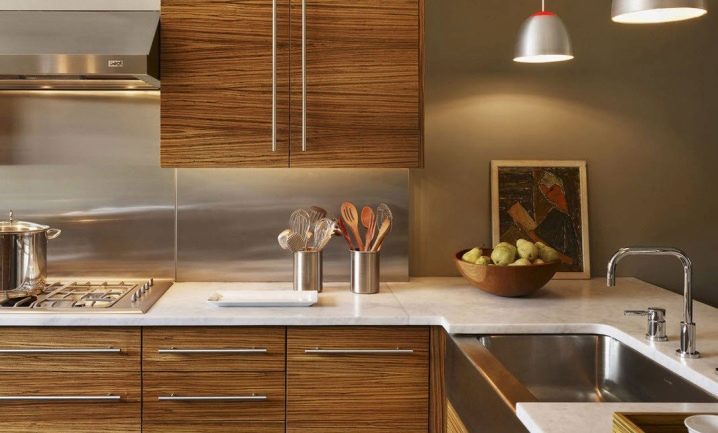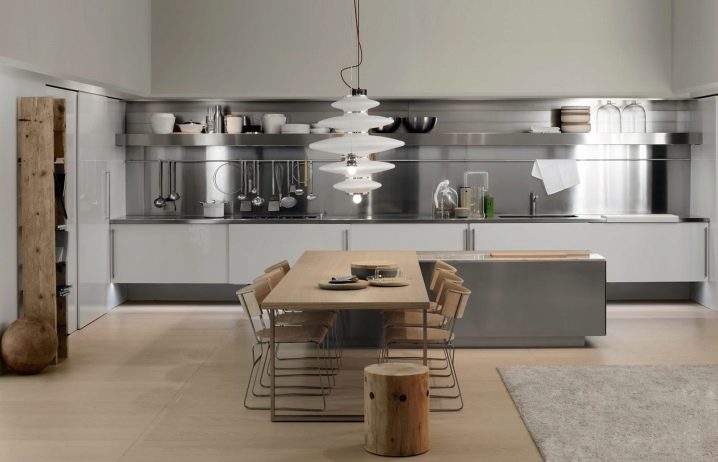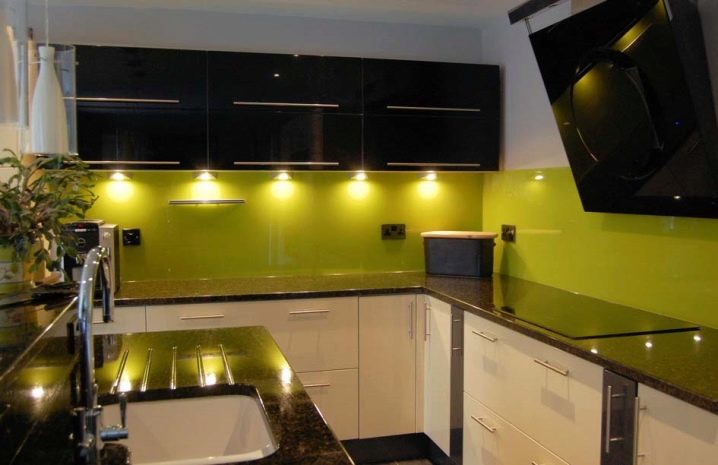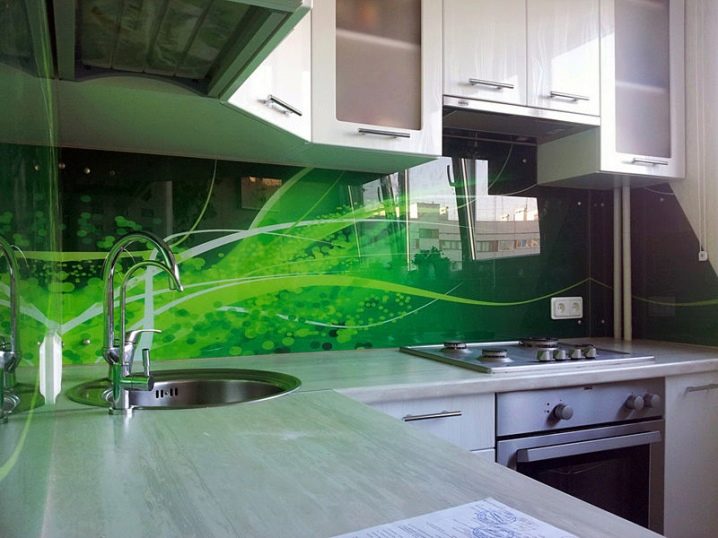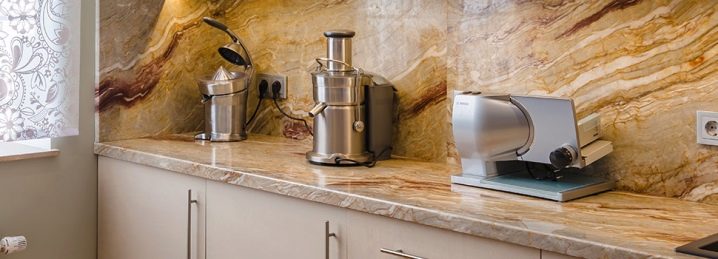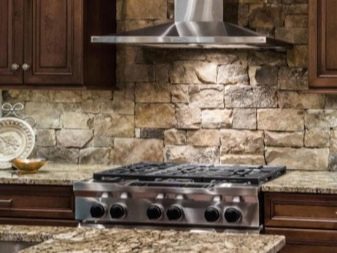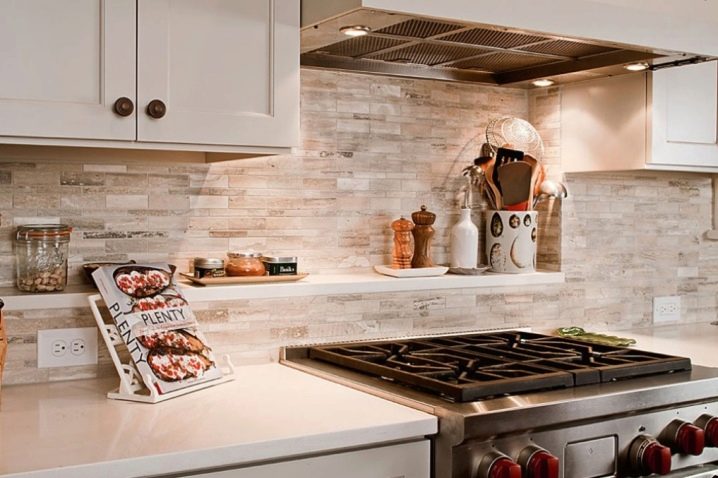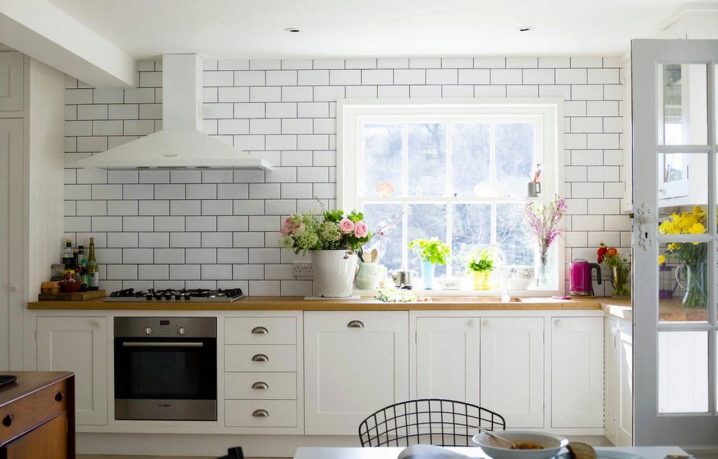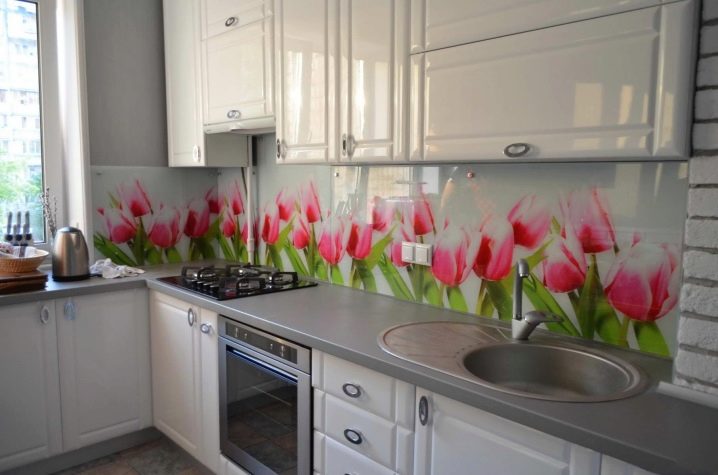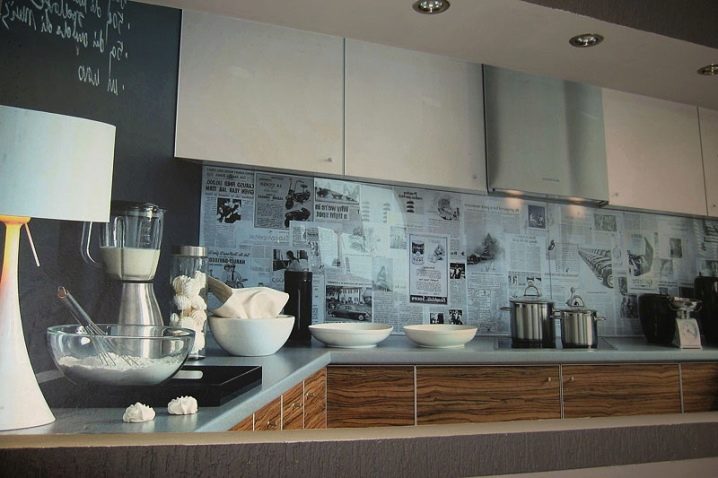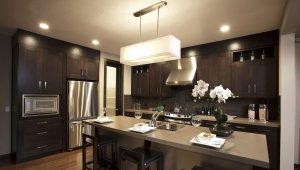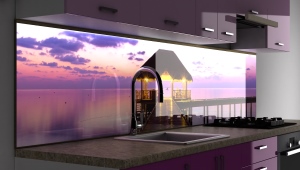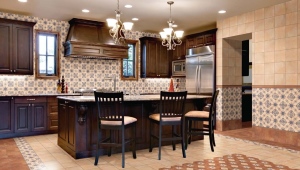Aprons for the kitchen
An apron is an indispensable thing in the kitchen, just like a stove with pots. And if without a rag any cook can do, then without a kitchen apron will have hard times. After all, it depends not only on the convenience, practicality and functionality of the kitchen area, but also its beauty and aesthetics.
Functions and features
An apron in the kitchen is usually the part of the interior that supports the style, character, and mood set by the room, or it is its main accent. In any case, it is designed to create a working and at the same time cozy atmosphere in the kitchen, successfully harmonizing with all its component parts - from the worktop to the fronts of the cabinets.
The main function of the kitchen apron is to protect the most contaminated parts of the wall that are closest to the heat and splashes of cooking food, washing dishes and working kitchen units (behind the hob, behind the sink and above the countertop).Therefore, the material from which it is laid out, must be easy to clean, calmly tolerate sudden changes in temperature, have increased strength and moisture resistance, minimal flammability. And since the main products in the kitchen are still, then the apron, involuntarily in contact with them, must also be eco-friendly - so as not to harm the tasty and healthy food with toxic fumes.
Well, the important features of the kitchen protective screen are the durability of the coating, durability and hygiene, as well as a wide choice of materials from which it can be made: from simply painted or tiled walls to copper or glass cloth for the entire length of the working surface.
Primary requirements
When marking the place for an apron on the kitchen wall, you should take into account not only the parameters of the room and the chosen furniture, but also the dimensions of the cook. With a standard height of 65 centimeters of a protective screen, which is provided for an electric oven, it will be difficult for a miniature hostess to reach cupboards or hoods hung in this place, and therefore, when arranging her kitchen, such an apron is better to shorten to 48-50 centimeters.However, if a gas stove is installed in the kitchen, the screen behind it must be 75-80 centimeters. And the width can be left usual - 50-60 centimeters. Or bring it to the size that is provided by the design project.
It is better to protect the junction of the working surface and the kitchen apron with a special sealant and build a baseboard, not forgetting about a couple of centimeters, on which the apron needs to fall under the worktop and upper and lower cabinets. This will prevent water from flowing through the cabinets, and therefore will not allow their swelling and the appearance of fungus there.
The ideal apron for the kitchen is a smooth and without visible docking tracks protective screen that fits exactly into the style of the kitchen space and the tastes of the owners.
Designer Tips
When choosing a kitchen apron, designers advise first to go shopping and pay attention to all the options of materials from which it can be made - so it will be easier to decide which of all types is best suited to your kitchen area and according to its technical characteristics and external data.
If the main accent of your kitchen is a headset, then a neutral apron made of materials with an inconspicuous texture will be more suitable for it.And if you want to decorate the kitchen area with a spectacular wall, then order a transparent glass panel with a contrast photo printing.
The versatile kitchen screen is made of smooth matte ceramic tiles or MDF panels matching the whole white color. The most traditional one is made of a single-color mosaic with colorful bright inserts, and the most unusual one is made of a single stone layer or a mirror panel.
Experienced interior designers remind you that a bright colorful apron always draws much attention to itself, which means it must always be kept clean and always supported by the appropriate entourage - curtains, curtain rods, accessories or kitchen wall patterns.
Materials
Types of materials for the manufacture of protective aprons amaze with their diversity. But in order to choose the right ones that will decorate your kitchen and do not detract from its merits, you need to determine all the pros and cons of each material, evaluate the advantages and possible disadvantages of its use, as well as take into account the installation features and the degree of complexity of the necessary care for a particular surface. The best advisers here are the reviews of those who have already decided on the choice of material and can actually prove its advantages.
MDF panels
The most compromising in cost and quality is a kitchen apron from MDF panel. Fiber boards are available for many at a price that is visually appealing and, importantly, easy to install and maintain. But the advantages of this material are few.
Among the obvious advantages:
- making the protective MDF panel the necessary textures and shades,
- possibility of imitation of various surfaces and types of finishes,
- availability of drawing any images using photo printing,
- ease of installation and ease of subsequent maintenance.
In addition, before installing a kitchen apron made of laminated chipboard or plain fiberboard, a perfect alignment of the wall is not required.
Among the shortcomings are:
- short service life (only a few years),
- stringent requirements for operation (does not withstand temperature shocks, abundant water procedures and systematic contact with abrasive cleaning agents, and therefore not suitable for intensively used kitchen).
At the same time, the low price of the protective kitchen screen made of MDF easily compensates for these qualities and at the same time allows for frequently, cheaply and quite solidly renovating the interior.
Tile and tile
The kitchen apron, classical and average at cost, is revetted with a tile or a ceramic tile. Often, manufacturers offer a large selection of ready-made tiled landscapes, made in various textures, color combinations and styles, which allows you to choose them for almost any room design.
The main plus of kitchen tiles is its practicality literally in all respects:
- strength and availability
- moisture resistance and incombustibility,
- environmental friendliness and durability (service life - 15-20 years),
- a variety of shapes, sizes and shades,
- resistance to abrasives and chemicals
- ease of care and aesthetics
- safety and comfort of operation,
- beauty and functionality.
There are few minuses, but they are also fully justified:
- the need to align the walls
- the complexity of styling,
- the presence of connecting seams, over time requiring cleaning.
Mosaic
Mosaic is a more expensive material for a protective apron than a tile, but also more variable. It makes it possible to create complex ornate patterns and even whole pictures on a kitchen wall from small various pieces of tiles.
The advantages of the mosaic panel above the table top or behind the stove:
- many forms and textures of mosaic tiles,
- high resistance to high humidity and temperature fluctuations,
- resistance to abrasion and contact with chemicals,
- the richness of colors, shades and colors,
- harmony with almost any interior.
In addition to the high cost, the disadvantages of the mosaic are mainly related to the complexity of installation:
- when installing requires skill wizard,
- perfect alignment of the wall is needed,
- it is necessary to use special grout for joints,
- the complexity of the reconstruction.
Stainless steel
Stainless steel is commonly used to make professional kitchen aprons, and relatively recently. Although the copper protective screens behind the stoves have been used in the home improvement for more than one century. Modern kitchen apron and sink of stainless steel are more correlated with high-tech style, and made of metal and its alloys - with modern or Provence. However, in any style the metal kitchen looks more industrialized than homely.
Steel or metal protective screen has a number of undeniable advantages:
- strength,
- durability,
- low weight
- ease of installation
- reflecting effect
- variety of available forms
- combination with other finishing materials.
At the same time, a kitchen apron made of steel or metal can be subject to corrosion if used improperly, and therefore requires constant careful maintenance of its surface.
Glass
Glass for the kitchen apron is not used as often as tile, but it has a rich variety of textures and colors. Behind the glass panel of the protective screen you can place any photographic image that will become a kind of "cherry on the cake" when creating a unique interior.
Advantages of a glass apron:
- practicality,
- functionality,
- high log resistance
- resistance to sharp temperature fluctuations
- chemical resistance,
- wide variation in performance,
- ease of installation and ease of maintenance.
Among the disadvantages:
- high cost of glass apron,
- dried drops of water and fat are very noticeable before harvesting,
- over time, even tempered glass will scratch or crack,
- A broken glass apron cannot be repaired, it must be replaced completely.
A natural stone
Natural stone for facing the kitchen is a costly pleasure, requiring special care, appropriate interior and, of course, work surfaces and worktops, also made of stone. Most often in the kitchen design there is a marble apron, although lately, designers have increasingly used other types of natural stone (onyx, granite, basalt).
The undoubted advantages of this eco-friendly natural material hardly need to be discussed, although it is worth noting the high fire resistance and incredible strength. And the substantial gravity of the stone apron and its equally significant cost are completely leveled by its beauty, refinement and nobility.
Fake diamond
Artificial stone kitchen apron is less expensive, lighter in weight and much easier to handle and install. In addition, it is more convenient to embody from the decorative stone even the most complex design ideas for the organization of the working space, especially due to the wide range of shades, composition and textures. The feature of the operation of an apron made of artificial stone, made, for example, marbled,is the possibility of its quick and simple restoration and luxurious appearance, which can be easily confused with natural stone.
Tree
Oddly enough, but for the manufacture of original aprons and natural wood is used, no matter how expensive it cost. Especially - when you make a cozy kitchen space at a country cottage or in country style, as well as in combination with wooden furniture and the corresponding decoration of the room.
However, the well-known properties of natural wood significantly narrow the range of its use in the kitchen - if it is near the sink or at the stove, then it is imperative behind glass or a metal plate. And for better preservation, such a wooden protective screen is treated with no less protective special non-flammable compounds or special wax that repels grease, soot, dirt and water.
Brick
A brick kitchen apron is more often constructed not from real bricks, but from fiber cement decorative plates made and burned "under a brick" or from ceramic tiles, made with a similar grooved or even surface. Unlike the present, decorative brick is much lighter, but also fire-resistant, resistant to abrasion, high humidity and mechanical damage, durable, durable and easy to install.However, the surface of a brick apron is quite porous and will suit not every interior.
Plastic
A plastic apron for the kitchen is affordable in price, pleasantly variable in manufacturing, relatively durable and quite convenient to install. However, a protective plastic kitchen screen is very easy to scratch even with cleaning agents and is easy to deform with little contact with hot objects. But the most unpleasant thing is that a kitchen apron made of polycarbonate, acrylic or composite material also quickly ignites, like ABS plastic, and when burning emits toxic substances.
Another significant drawback of a plastic apron in the kitchen - its edges and joints quickly get dirty, and are cleaned with difficulty and only by special means. In addition, the plastic screen is completely impractical - it is easily cracked even from an occasional gentle blow.
Economy options for the manufacture of an apron can be combined in one phrase - "the need for invention is cunning." They are made from wallpaper glued onto cardboard and from a sheet of particle board on which a self-adhesive film is stretched, although one cannot speak of any protective function of such screens.Aprons made from scrap materials are suitable except for the time of repair - until in their place the ones that are specifically designed for use in harsh conditions of increased pollution, high humidity and jumping temperature, typical of both familiar and non-standard kitchen area, do not sparkle with cleanliness, beauty and reliability. .

